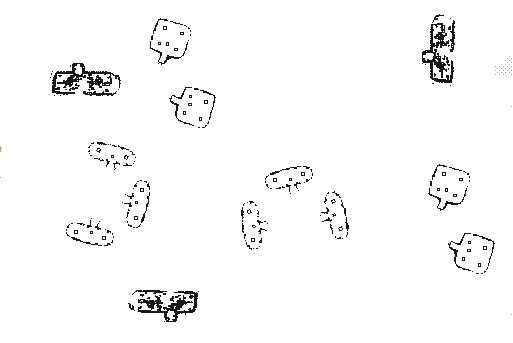
Your crew of archaeologists have been given permission and the necessary funding to excavate a Hohokam site which contained all three periods of the Hohokam culture. Click on each house to see which ones have been excavated by your crew. (One house from each period has been excavated - moving the cursor over the site map will identify those three houses.) Sort through the information you receive and organize it to help you answer the following questions on Hohokam architecture. (Background on Hohokam Culture)

Questions:
1. What happened to the size of the houses from the
Pioneer to Sedentary periods?
2. What was the occupational purpose of each house that was excavated?
3. Where were Pioneer houses found relative to other houses?
4. Where were Sedentary houses found relative to other houses?
5. What happened to the shape of houses from the Pioneer to Sedentary periods?
This house dates to the Sedentary Period. The house is 3.5 meters long and 2.25 meters wide. The door opens to the east. There were the following artifacts on the floor of this house when your crew excavated it: a stone axe, a pestle, a metate, three manos, a stone chopper, two obsidian knives, and 1 obsidian scraper for scraping hides.
This house dates to the Colonial Period. The house is 5.0 meters long and 5.0 meters wide. The door opens to the south. There were the following artifacts on the floor of this house when your crew excavated it: a shell bracelet, 2 broken shell bracetets, 10 unfinished shell jewelry fragments, a collection of 25 whole sea shells, 2 clay figurines with heads, arms and legs, and 1 deer figurine, and 200 turquoise beads.
This house dates to the Pioneer Period. The house is 7.5 meters long and 3.5 meters wide. The door opens to the south. There were the following artifacts on the floor of this house when your crew excavated it: a small bowl, a small jar, 2 large bowls, a large jar probably used to store food, a shell bracelet, a clay figurine with a head, arms and one leg, a metate, and a mano.
Check for Sequenced Map
- use to build inference base to answer the questions!!
RETURN to the beginning
RETURN to the Archaeological Web Area
GO TO the Canal Reconstruction Exploration